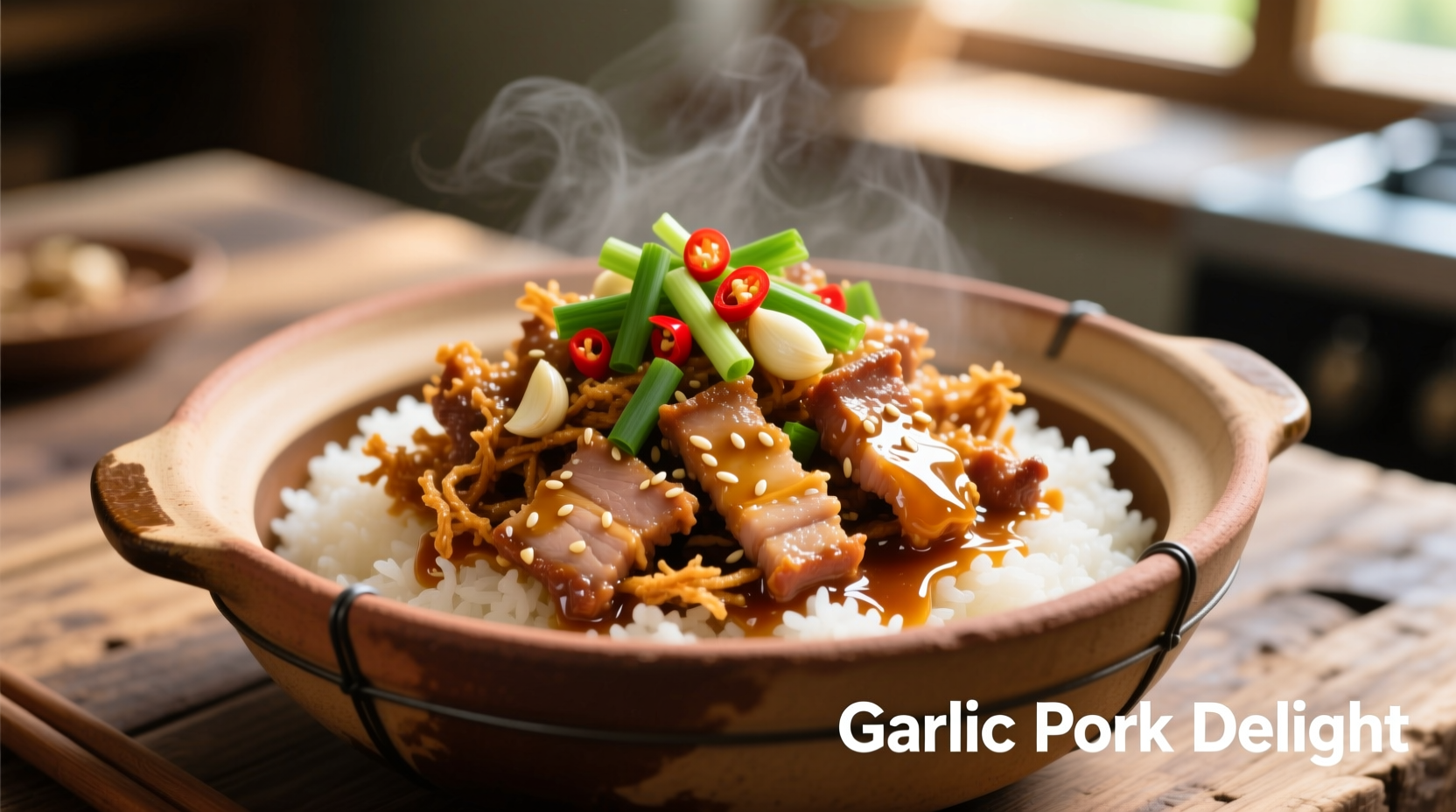Discover how to create restaurant-quality shredded pork with garlic sauce in your home kitchen with this comprehensive guide. You'll learn the authentic preparation method that Chinese chefs have perfected over generations, including the precise sauce ratios, proper pork preparation techniques, and common mistakes that ruin texture and flavor. Whether you're a beginner or experienced home cook, these professional insights will transform your stir-fry results.
The Origins and Evolution of Yu Xiang Rou Si
Yu Xiang Rou Si (fish-fragrant shredded pork) emerged during the late Qing Dynasty in Sichuan province, evolving from traditional preservation techniques where cooks used similar seasonings for preparing fish dishes. Despite its name, the dish contains no fish—the "yu xiang" (fish fragrance) refers to the distinctive flavor profile developed for fish preparations that became popular with pork.
| Period | Development |
|---|---|
| Late Qing Dynasty (1800s) | Initial creation in Sichuan province by chefs adapting fish seasoning techniques to pork |
| Early 1900s | Spread throughout China as Sichuan cuisine gained popularity |
| 1940s-1950s | Standardized recipe formulation during culinary documentation efforts |
| 1980s-Present | Global popularity as Chinese restaurants expanded worldwide |
Essential Ingredients Breakdown
The magic of authentic shredded pork with garlic sauce lies in the precise balance of its signature sauce components. Unlike Western adaptations that oversimplify with just garlic and soy sauce, the traditional preparation requires specific ingredients in exact proportions.
Proper Pork Selection and Preparation
Use pork tenderloin or shoulder cut against the grain into uniform 2-inch strips about 1/8-inch thick. The key to perfect texture is velveting—a Chinese technique where you marinate the pork with egg white, cornstarch, and Shaoxing wine for 20 minutes before cooking. This creates a protective layer that keeps the meat tender during high-heat stir-frying.
The Authentic Sauce Formula
The "fish-fragrant" sauce requires these precise components:
- 2 tbsp Chinkiang vinegar (provides the distinctive sour note)
- 1.5 tbsp light soy sauce
- 1 tbsp sugar
- 1 tsp dark soy sauce (for color)
- 1 tbsp Shaoxing wine
- 1 tsp sesame oil
- 1 tbsp chili bean paste ( Pixian doubanjiang )
- 2 tbsp chicken stock or water

Step-by-Step Cooking Process
Preparation Phase
Before heating your wok, have all ingredients prepped and within reach—Chinese cooking happens quickly. Cut:
- 3 scallions (white parts separated from green)
- 1 small carrot into fine matchsticks
- 2 oz bamboo shoots into fine matchsticks
- 3 garlic cloves minced
- 1 inch ginger minced
The Critical Stir-Fry Sequence
- Heat wok over high heat until smoking, add 2 tbsp peanut oil
- Quickly stir-fry marinated pork until 80% cooked (about 1 minute), then remove
- Add 1 tbsp oil, stir-fry garlic, ginger, and white scallion parts for 10 seconds
- Add chili bean paste, stir until oil turns red (30 seconds)
- Return pork to wok, add carrots and bamboo shoots
- Pour sauce around edge of wok for proper caramelization
- Stir-fry until sauce thickens and coats ingredients (about 1 minute)
- Finish with green scallions and serve immediately
Regional Variations Comparison
While Sichuan version remains the most authentic, regional adaptations have emerged as the dish gained popularity:
| Region | Sauce Characteristics | Key Differences |
|---|---|---|
| Sichuan (Authentic) | Bright red, glossy, complex sweet-sour-spicy balance | Uses Pixian chili bean paste, includes pickled vegetables, moderate heat |
| Cantonese Adaptation | Milder, sweeter, less oily | Reduces chili content, increases sugar, often adds bell peppers |
| American-Chinese | Thicker, sweeter, predominantly garlic flavor | Uses bottled garlic sauce, often includes broccoli, lacks authentic fermented elements |
Common Mistakes That Ruin Authentic Flavor
Based on decades of professional kitchen experience, these errors most frequently compromise shredded pork with garlic sauce:
- Over-marinating pork—more than 30 minutes makes meat mushy
- Using low heat—prevents proper wok hei (breath of the wok) development
- Adding sauce too early—causes ingredients to steam rather than stir-fry
- Substituting rice vinegar for Chinkiang—lacks the complex fermented flavor
- Overcooking vegetables—carrots and bamboo shoots should remain crisp
Serving and Pairing Recommendations
Authentic Yu Xiang Rou Si should be served immediately while hot, accompanied by steamed jasmine rice. The dish pairs exceptionally well with:
- Crisp cucumber salad to balance richness
- Light vegetable stir-fry like snow pea shoots
- Jasmine tea or light-bodied Chinese rice wine
Avoid pairing with heavy dishes as the delicate flavor balance can be overwhelmed.
Storage and Reheating Guidelines
While best enjoyed fresh, leftovers can be stored properly:
- Refrigerate in airtight container for up to 3 days
- Freeze for up to 2 months (sauce may separate slightly)
- Reheat in wok over medium heat with 1 tsp water to restore moisture
- Avoid microwave reheating which ruins texture
Perfecting Your Technique: Professional Insights
Mastering shredded pork with garlic sauce requires understanding these nuanced elements:
The sauce should coat ingredients with a thin, glossy layer—not swimming in liquid nor completely dry. When properly executed, you'll achieve bao (the wok's high heat causing ingredients to absorb flavors while maintaining texture). The garlic shouldn't taste raw but rather mellowed and integrated into the complex sauce profile.
For home cooks without professional wok setup, use your largest skillet over the highest heat your stove allows, working in small batches to prevent temperature drop. Preheat the pan thoroughly before adding oil—this prevents sticking and enables proper searing.











 浙公网安备
33010002000092号
浙公网安备
33010002000092号 浙B2-20120091-4
浙B2-20120091-4